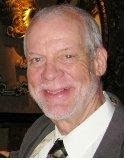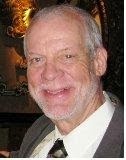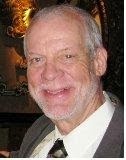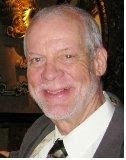[I would like to begin by looking back at what happened last week with the topic being “The Person I Fall in Love with Should Be…”. As we were leaving, I was feeling disheartened for two reasons: 1) I realized that the topic I had been responsible for was not inclusive of those in the group who are in a committed relationship. It essentially left them with almost nothing to say. I apologize for that and will not allow that to happen again. 2) One of our participants made it very clear that they were not at all happy with the word “should” and made quite a point of saying that “should” is a word that should never be used as part of a topic. I wonder if we want to engage in such disparagement of a topic, especially if, as was the case last week, the originator of that topic is present.
One more comment: We have been very clear that no one is required to write on the “topic of the week”. However, I think that it is conducive to the creative process to make those deviations the exception, rather than the rule. Hearing diverse perspectives on the same topic is what makes for a stimulating hour-and-a-half and also forces us to channel our creative forces in constructive ways. ‘Nuff said about process.]
Clothes are worn for many purposes: style, status, and modesty for three. I’m going to talk about a fourth: body image. People tend to model what they think is going to “surprise and delight” the casual observer or, perhaps, significant other. Popular opinion has a way of letting someone know when they have stepped over the line of decorum and/or vogue. As a repressed exhibitionist with an eroticized libido, I have been an avid follower of these taboos for most of my life. There exists in modern American society a very distinct double-standard when it comes to the line between dress that titillates and that which commits sensory trespass.
I would like to share with you a letter written to Annie’s Mailbox advice column that was published in the Denver Post on June 29, 2003, along with the response from the columnists, Kathy Mitchell and Marcy Sugar, —
[Read letter from photocopy.]
The key to understanding the present state of our society is in the first paragraph of the response:
“Most 14-year-old boys would not be willing to put up with the teasing that Jonah is getting from his peers. Stylish or not, they would stop wearing the swimsuits. Either Jonah has tremendous self-assurance or he is enjoying these bikinis on an entirely different level.”
I have to wonder–what level would that be? The same level upon which girls of that age might enjoy wearing a bikini? I don’t think that is what is meant at all. As the responders also write, “Bikinis and thongs usually indicate something more sensual. Exhibitionism and cross-dressing are possibilities but they aren’t the only ones.” What, exactly might the others be? Homosexuality? Pedophilia? Has anyone ever asked models for the Sports Illustrated swim suit issue if they are exhibitionists? And to even suggest that “Jonah” might be a cross-dresser is to imply that thongs and bikinis are the sole province of the female gender, which is begging the very question that I am asking: Isn’t what is good for the gander also good for the goose?
When I was about 10 years old, I took a swimming class at the Hutchinson, KS, YMCA. The rules were that swimming suits were not allowed in the pool, as they might carry germs. We had to shower before we got into the pool, as well as after. I was terrified but soon got comfortable with letting it all hang out. By the time my own children were about that age, boys did not even take their swimming suits off to shower after swimming. Why the vast difference? I would welcome any and all ideas on this.
In 1990, my wife, kids and I set out for Disney World in Orlando. Wanting to appear “with it”, I bought my first pair of “surfer-style” swim trunks just for the occasion. When we went to the water park, the first thing on the kids’ agenda was the huge, serpentine water slide. Not wanting to appear skittish or square, I enthusiastically joined them. Just one problem: about 6 feet down the slide, my ridiculously bulky “trunks” grabbed hold of the slide and held on for dear life. I had to “scoot” down the remaining three stories of slide while trying not to get “rear-ended” by an unsuspecting kiddie. I have worn nothing but trusty Speedos ever since. Yes, sometimes I do feel a little “over-exposed” but at least I don’t carry a gallon of water with me whenever I get out of the pool.
[As an illustration of the fact that America’s discomfort with the male form is not universal, I am passing around a copy of Down Under: To glorify the Australian lifesaver. I have flagged a few pertinent pages.]
© September 22, 2014
About the Author
I came to the beautiful state of Colorado out of my native Kansas by way of Michigan, the state where I married and I came to the beautiful state of Colorado out of my native Kansas by way of Michigan, the state where I married and had two children while working as an engineer for the Ford Motor Company. I was married to a wonderful woman for 26 happy years and suddenly realized that life was passing me by. I figured that I should make a change, as our offspring were basically on their own and I wasn’t getting any younger. Luckily, a very attractive and personable man just happened to be crossing my path at that time, so the change-over was both fortuitous and smooth. Soon after, I retired and we moved to Denver, my husband’s home town. He passed away after 13 blissful years together in October of 2012. I am left to find a new path to fulfillment. One possibility is through writing. Thank goodness, the SAGE Creative Writing Group was there to light the way.









